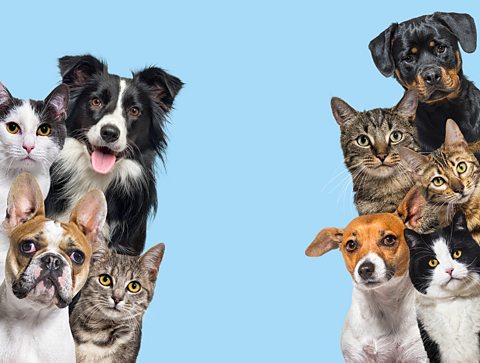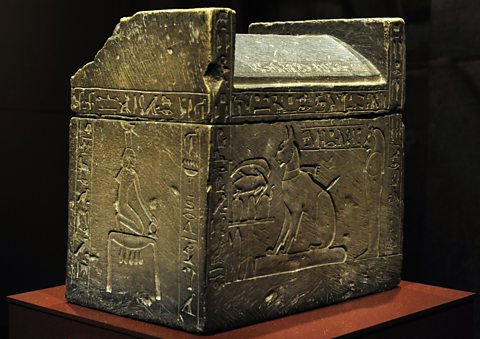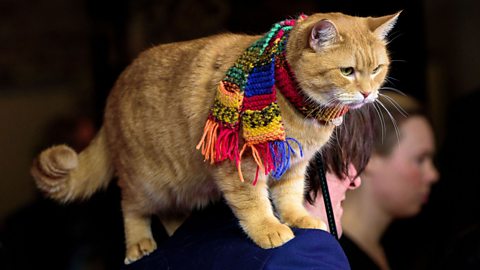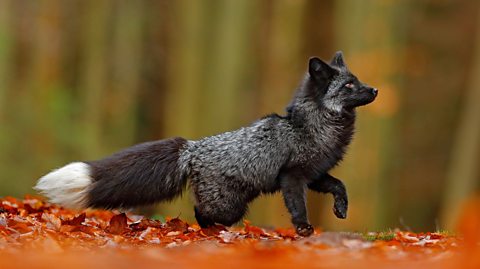Itâs no secret that we love our animal friends. Research led by the Pet Food Manufacturers' Association shows that 62% of UK households owned some kind of pet in 2022.
Animals have played an important part in human life throughout history. But while it might feel like our furry friends have been by our sides as pets since the beginning of time, the process of domesticating them has taken thousands of years. So how exactly did we get to where we are today?

The long and im-paw-tant history of animal domestication
The history of pets is closely intertwined with the process of animal domestication. While the timings and processes of the domestication remain largely unknown, there are plenty of theories that provide us with a ruff idea.
Domesticated animals were likely kept for practical reasons, such as food sources, for work or for protection. It may feel natural to assume that the first species to be domesticated were working animals, such as oxen or donkeys, but dogs were indeed the first to be tamed.
In 2016, the University of Oxford published evidence that dogs were domesticated twice. They found that this took place in Europe about 16,000 years ago and then again in Asia around 14,000 years agoâfrom two separate wolf lineages.
Their work argues that as well as being the first domestic animal, dogs were likely to have been the first pet too. Paintings and carvings found by archaeologists in ancient campsites and tombs also indirectly show that dogs may have been kept as pets. The discovery of a 14,000 year old Paleolithic tomb in Germany found a human buried with a dog or puppy, which could suggest that affection has long existed between people and pooches.
But what about humankind's other animal friends? Donkeys are thought to have been domesticated in East Africa around 7,000 years ago, whereas cattle and sheep domestication took place 8,000 years ago in the Middle East.
Many researchers have come to question how cats came to live amongst people. While other animals could be used for their milk, meat, wool or labour, cats donât directly offer much towards human survival. Genetic and archaeological findings suggest that they grew closer to humans in order to take advantage of mice and food scraps found in settlements.
Even so, it is generally believed that cats werenât domesticated as pets until about 16th Century BCE by the ancient Egyptians, much later than dogs. In fact the Egyptians had already domesticised many animals, including lions, monkeys, and hyenas, before they managed to tame cats. Once they were they grew immensely popular and eventually became one of the most universally worshipped animals.

Pets throughout the ages
But when does a domesticated animal become a pet? A pet is typically defined as an animal kept for companionship. The special bond between animals and their owners can be found in small pockets of history from across the ages.
The Ancient Greek ruler Alexander the Great had a favourite pet horse called Bucephalus. One legend says that the wild horse, who could not be tamed by Alexanderâs father or any of his men, was quickly domesticated by the young Alexander and went on to become one of the most famous horses in ancient literature. Alexander even went as far as to name a city in memory of Bucephalus, who died during the The battle took place in 326 BCE and was the last pitched battle fought by Alexander the Great during him conquest in Asia..
Another famed pet was Thutmose was the eldest son of Pharaoh Amenhotep III in Ancient Egypt. royal feline Ta-miu, a name meaning she-cat. Thutmose was so fond of Ta-miu that, upon her death, he had a grand limestone sarcophagus carved out for her and her body mummified before being buried. The carvings show a cat sitting by an offering table stacked with goodies for the afterlife.
But the pet-fever doesnât stop there. A 2020 archaeological dig in Spain found that the Romans kept small toy dogs around 2,000 years ago. In the last few hundreds of years, European royalty had garments made to include special pockets - big enough to stash a small dog!
However, it wasnât until the 18th and 19th Centuries that the concept of pethood, as we know it today, came into existence. At this time pet keeping became more societally acceptable and as a result pets grew increasingly common.
The scholar Ingrid Tague found 18th Century elegies for a wide range of pets in Britain, including 53 dogs, 17 cats, 12 canaries and six monkeys. Decades later, the first formal and competitive dog show took place in Newcastle for the Pointer and Setter breeds.
Today, pets play a variety of different roles in our lives. Some pets serve as status symbols, some are helpers, and others even have jobs! Research shows that caring for a pet can improve our mental wellbeing, by easing anxiety and boosting self-confidence. And for that we wouldnât change our purr-fect pals for the world.
This article was published in April 2023
Cats with careers: Four enviable purr-fessions
Meet cats who have made a name for themselves in the world of work.

Amazing UK wildlife that will take your breath away
From black foxes to pink moths, 91ČČąŽ Bitesize takes a look at the wild and wonderful creatures of the UK.

Three 'immortal' creatures that have fascinated scientists for decades
These animals seem to have cracked the code to stop, or even revert, ageing.
